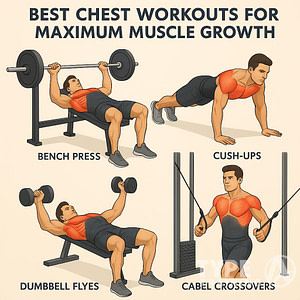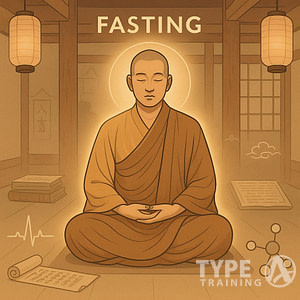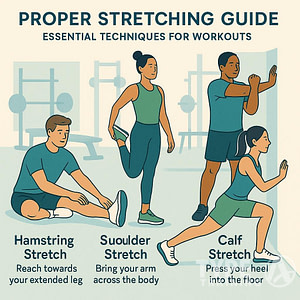Cold plunges have gained attention for their potential to relieve muscle soreness, reduce inflammation, and provide a range of other health benefits. This practice, which involves immersing oneself in icy water, is often used by athletes for recovery after intense workouts. But it’s not just for the sports elite; anyone seeking a revitalizing boost may be interested in trying a cold plunge.
Understanding the process and effects of cold plunging is crucial before diving in. When you immerse your body in cold water, you initiate a ‘cold shock’ response, which includes an increased heart rate and a surge in stress hormones. Properly preparing for and performing a cold plunge is important, as it can minimize risks and help you gain the maximum benefits from this invigorating experience.
Key Takeaways
- Cold plunges may help alleviate muscle soreness and reduce inflammation.
- A proper approach to cold plunging is critical for safety and effectiveness.
- Cold therapy is becoming an increasingly popular component of lifestyle and wellness routines.
Understanding Cold Plunges
Popular posts:
Cold plunges, a practice of cold water immersion, involve a brief dip in an ice bath or cold pool. This therapeutic method is distinct from cryotherapy and has roots in historical practices.
History of Cold Plunges
The tradition of cold plunging dates back to ancient civilizations, with evidence suggesting its use for therapeutic purposes. Ancient Greeks and Romans utilized cold baths, valuing them for their invigorating and restorative properties. In more recent history, cold water therapy gained popularity with the growth of ice baths among athletes for recovery.
Cold Plunge Vs. Cryotherapy
Cold Plunge:
- Involves submerging your body in icy water, often below 50 degrees Fahrenheit.
- Duration: Generally short, lasting up to several minutes.
- Purpose: To stimulate the body’s response to cold, benefiting recovery and wellness.
Cryotherapy:
- Exposure to extremely cold air in a controlled environment.
- Duration: Typically between 2 to 4 minutes.
- Purpose: To reduce inflammation and pain, aiming to enhance recovery with more localized or whole-body exposure.
Both methods promote recovery, though cold plunges are more accessible and have a tradition of use that goes beyond the modern practice of cryotherapy.
Benefits of Cold Plunges
When you partake in cold plunges, you are engaging in a practice that may offer you multiple health benefits—both physical and mental. The following will outline the specific advantages you could experience.
Physical Health Advantages
Reduce Inflammation: Cold plunging is recognized for its role in reducing inflammation and soreness in your muscles after activities, such as intense workout sessions or sports. By constricting your blood vessels, the cold water can help in decreasing swelling and providing pain relief.
Immune System Boost: Regularly immersing yourself in cold water may strengthen your immune system. The exposure to cold is believed to stimulate the production of white blood cells, which play a crucial role in fighting off illnesses.
Enhanced Circulation: Alternating between hot and cold water during baths can improve your circulation. Improved blood flow contributes to better oxygen and nutrient delivery throughout the body, which can elevate your overall well-being.
Mental Health and Mood Effects
Mood Improvement: Cold plunges can increase the release of dopamine, a neurotransmitter associated with feelings of pleasure and satisfaction. This immediate mood boost is a compelling reason many individuals include cold plunging in their routines.
Stress Reduction: Engaging in cold water immersion may help lower stress levels. The practice can prompt the release of endorphins, the body’s natural stress fighters, often leading to a serene, euphoric feeling post-plunge.
Combatting Depression: Some research suggests that cold plunges can be beneficial in managing depression. The intense cold impact may trigger a flood of mood-supporting neurotransmitters, providing a natural and refreshing lift to your mental state.
Cold Plunge Procedures
Before you begin a cold plunge, it’s essential to understand the correct procedures. These steps ensure a safe and effective experience with cold water immersion, regulate your body temperature, manage shivering, and guide your breathing.
Preparing for a Cold Plunge
To prepare for a cold plunge, ensure the water temperature is set between 50°F to 59°F. Before entering, spend a few minutes calming your mind and stabilizing your breathing. It’s inadvisable to enter the water if you feel unwell or have not consulted with a healthcare provider regarding cold water immersion.
- Pre-Plunge Checklist:
- Consult a medical professional if you have health concerns.
- Verify the water temperature.
- Focus on calming your nervous system.
- Plan your entry and exit to prevent prolonged exposure.
Proper Technique
Begin by gradually immersing yourself into the cold water. Once you’re in, try to control your breathing; it’s normal for your breath to quicken due to the shock of the cold, but deep, measured breaths can help in managing the initial shivering response. Limit the time of your initial plunges as your body acclimates to the cold environment.
- Technique Tips:
- Enter the water up to your neck slowly.
- Practice deep, steady breathing to combat sudden breathlessness.
- Limit your time in the water initially, progressively building as tolerated.
Post-Plunge Care
After exiting the cold plunge, dry off quickly and dress warmly to prevent your body temperature from dropping further. A gradual warming process aids in normalizing your body’s temperature and mitigating the intensity of shivering post-immersion. Monitor your body’s reactions closely during and after the plunge for any adverse effects.
- Care Instructions:
- Towel off immediately and dress warmly.
- Engage in light physical activity to promote blood circulation.
- Monitor any prolonged shivering or discomfort.
Physiological Effects

Cardiovascular Impact
As you immerse yourself in cold water, your blood vessels constrict, which is a process known as vasoconstriction. This response reduces blood flow to the surface of your skin, redirecting it to vital organs. The impact on your circulation can initially cause an increase in heart rate as your body reacts to the cold stimulus, subsequently trying to maintain core temperature.
Musculoskeletal Benefits
The constricting of blood vessels also plays a role in musculoskeletal health. Reduced blood flow may decrease inflammation and muscle soreness post-exercise, potentially speeding up your recovery time. This is one reason why athletes often incorporate cold plunges as part of their training regimen; it helps to rapidly ease the discomfort of overworked muscles.
Cold Plunge and Exercise
Engaging in a cold plunge practice after high-intensity exercise can become an integral part of your workout recovery regime. This method of active recovery leverages the cold temperatures to aid athletes in their post-exercise recuperation strategies.
Recovery Tool for Athletes
Cold water immersion, often known as a cold plunge, is used by athletes to enhance muscle recovery after strenuous workouts. When you submerge your body in colder temperatures, it can help constrict blood vessels and reduce inflammation. This form of therapy is frequently found in sports medicine protocols because it’s believed to accelerate the body’s natural healing processes following high-intensity exercise.
- Process:
- Submersion in water typically between 10 to 15 degrees Celsius.
- Duration varies, generally ranging from 5 to 15 minutes.
- Benefits:
- May decrease muscle soreness.
- Could reduce swelling and tissue breakdown.
- Potentially improves recovery times.
Leading institutions like the Cleveland Clinic and renowned wellness platforms such as BarBend note the growing popularity and perceived effectiveness of cold plunges among athletes and fitness enthusiasts.
Exercise-Induced Stress Recovery
After a vigorous workout, your body experiences physical stress due to exercise-induced muscle damage and soreness. Cold plunges can act as an aid to ease this discomfort, with recovery being a top priority for active individuals. It’s important for you to note that while some evidence suggests benefits, opinions on timing and frequency remain neutral and are personalized based on individual needs and responses.
- Timing:
- Consider whether to engage in cold plunges before or after exercise for optimal results, as noted by resources like A Healthier Michigan.
- Recovery Focus:
- Stress from high-intensity exercise might be alleviated through cold water immersion.
- Encouraged as part of a wider active recovery strategy.
Always consult with a sports medicine professional to tailor the cold plunge method to your specific recovery needs and to ensure the practice is safe and effective for your individual athletic pursuits.
Psychological Responses
Cold plunges have been associated with notable psychological responses, particularly concerning your stress and anxiety levels, as well as your mental alertness. Through intentional exposure to extremely cold temperatures, certain mental health benefits may be experienced.
Stress and Anxiety Reduction
When you immerse yourself in cold water, your body initiates a stress response, which can lead to a significant reduction in anxiety. The cold environment stimulates the production of endorphins, sometimes referred to as “feel-good” hormones, providing a natural relief from stress. Regular cold plunging might further result in long-term adaptation to stress, an effect supported by some who have linked cold water immersion with techniques similar to meditation.
Enhancing Focus and Alertness
The shock of cold water not only spikes adrenaline but can also enhance your alertness. This immediate rush can elevate your mental sharpness and focus. The intense sensation prompts your nervous system to heighten the state of awareness, a response that some liken to the wakefulness brought on by a strong cup of coffee.
Cold water immersion involves a careful balance, requiring attention and respect for its power to affect the mind and body. Your experiences with cold plunges may vary, but the practice often leads to a potent enhancement of both physical and psychological resilience.
Risks and Considerations
Before you dive into the practice of cold plunges, it’s crucial to be aware of the potential health risks and certain conditions that might necessitate avoiding this activity altogether.
Potential Health Risks
- Hypothermia: Immersion in cold water can lead to a dangerous drop in body temperature, known as hypothermia. Symptoms can escalate rapidly from shivering to confusion and loss of coordination.
- Drowning: There is an inherent risk of drowning if you become incapacitated in the water due to the shock of the cold, or if you have underlying health conditions that might be exacerbated by the cold plunge.
Who Should Avoid Cold Plunges?
- Individuals with Cardiovascular Disease: If you have heart-related issues, the shock of cold water might place undue stress on your cardiovascular system.
- Those Prone to Respiratory Conditions: Cold water can cause an involuntary gasp reflex and hyperventilation, problematic for those with existing respiratory diseases.
Scientific Evidence
In exploring the efficacy of cold plunges, scientific evidence plays a crucial role. You’ll discover that there’s a growing body of research, but also that determining the true effects can be complicated by the placebo effect.
Research on Cold Water Immersion
Randomized controlled trials have provided some foundational understanding of cold water immersion. Often, these studies focus on athletic recovery, aiming to assess how exposure to cold temperatures affects muscle soreness and repair. For instance, a systematic review in the British Journal of Sports Medicine suggests that cold water immersion can help reduce muscle soreness after intense physical activity. Practically, athletes might utilize cold plunges to hasten recovery times and combat inflammation.
Placebo Effect in Studies
The concept of the placebo effect is critical when discussing the potential benefits of cold plunges. Some participants may report positive outcomes from cold water immersion even when it has no therapeutic benefit, simply because they believe in its effectiveness. Studies often attempt to control for this by including a placebo group, where participants are given a treatment that seems real but isn’t expected to affect the outcome. By comparing results from the actual intervention against the placebo, researchers can more accurately discern the true impact of cold water immersion.
The examination of cold plunges is complex, and while there is evidence to support certain benefits, it’s essential to consider the placebo effect’s influence in the current body of literature.
Cold Plunge in Lifestyle
Incorporating a cold plunge into your lifestyle can lead to various health benefits and avenues for relaxation. It can become part of your daily routine, whether practiced through a shower modification or by utilizing facilities at your local gym.
Incorporating Cold Plunges into Routine
To seamlessly integrate cold plunges into your lifestyle, start by identifying the most convenient time and place. Many people find that morning cold plunges energize them for the day, while others may prefer a cold plunge post-workout for its potential to improve recovery.
- Morning Routine: Replace or follow your warm shower with a 1-2 minute cold shower to kickstart your day.
- Post-Exercise: After a gym session, utilize cold plunge tubs if available, or a cold shower for muscle recovery.
- Evening Wind-Down: A brief cold plunge can help you relax before bed, potentially improving mental health and sleep quality.
DIY Cold Plunge Setup
Creating your own cold plunge at home can be straightforward, whether using your bathtub or a dedicated cold plunge tank.
- Bathtub Conversion: Fill your bathtub with cold water and ice to mimic a standard cold plunge experience.
- Personal Cold Plunge Tubs: Invest in a dedicated cold plunge tub designed for home use, which can be a more controlled and convenient option.
When customizing your home setup, important considerations include:
- Temperature Control: Aim for water temperatures around 50-59°F (10-15°C), adjustable based on your tolerance and objectives.
- Safety Features: Ensure your setup has nonslip surfaces and easy entry/exit to prevent accidents during use.
- Maintenance: Regular cleaning and water treatment are crucial in a DIY setup to maintain hygiene standards.
Advancements in Cold Therapy
Your understanding of cold therapy advancements is crucial as both technology and sports medicine continue to integrate new scientific findings into their procedures. This progress significantly enhances the efficiency and application of therapeutic cold treatments.
Technology and Equipment
In the realm of technology and equipment, the development of cryotherapy chambers and portable cold plunge units has revolutionized cold therapy. Advanced sensors now monitor your skin temperature and heart rate to provide a tailored cold exposure experience, optimizing the cold shock response without compromising safety. Manufacturers are leveraging these data points to fine-tune their offerings to your specific recovery needs, often incorporating smartphone integration for real-time health tracking.
Cold Therapy in Sports Medicine
Within sports medicine, cutting-edge research into the cold shock response has informed the practice of icing to aid in recovery. Professional athletes often use tailored cryotherapy protocols after intense training sessions to decrease recovery times and improve performance. Your accessibility to these treatments has flourished, with many sports facilities and therapy centers now offering sophisticated cold water therapy systems. These advancements allow for a precise application of cold therapy, which can be instrumental in mitigating sports injuries and accelerating your healing process.
Beyond Cold Plunging
Exploring health and wellness goes beyond the core practice of cold plunges. It’s about finding what resonates with your lifestyle and contributes to your well-being and growth. Let’s look at alternative methods and holistic practices that complement or offer different benefits than cold plunging.
Alternative Approaches for Health
While cold plunging has been highlighted for its potential benefits such as easing sore muscles and reducing inflammation, swimming in temperate water is a gentler option that can improve cardiovascular health and enhance joint mobility. It’s a full-body workout that’s both invigorating and low-impact.
In addition to physical activities, meditation offers a non-physical alternative that can significantly improve your mental well-being. Implementing a regular meditation practice can lead to greater emotional balance, stress reduction, and a deeper sense of inner peace.
Holistic Well-being Practices
Your approach to wellness should encompass the whole of your being—physical, mental, and spiritual. Holistic practices aim to integrate all aspects of your health. This includes not only exercise and nutrition but also stress management and personal growth.
- Yoga combines physical postures, breath control, and meditation to enhance flexibility, strength, and mental clarity.
- Tai Chi is a form of meditative movement known to foster serenity and improve balance.
- Aromatherapy, utilizing essential oils, can have a calming effect and support a relaxing environment for your ongoing wellness journey.
Each of these holistic practices can contribute to your overall well-being, potentially leading to a more fulfilled and balanced life.
Frequently Asked Questions
Understanding the ins and outs of cold plunge therapy can help you incorporate this practice safely and effectively into your wellness routine.
What are the established health benefits of engaging in regular cold plunge therapy?
Regular cold plunge therapy is known to ease muscle soreness and reduce inflammation. It’s also frequently used to enhance recovery post-exercise.
How does the temperature and duration of a cold plunge affect its potential benefits?
A cold plunge’s effectiveness depends on various factors, including temperature and duration. It is suggested that the water temperature be cold enough to induce therapeutic effects without causing harm, and immersion times should be adjusted accordingly.
What safety precautions should one take before starting cold plunge practices?
Prior to starting cold plunger practices, ensure you have no health conditions that contraindicate cold exposure. It’s essential to acclimatize yourself gradually to the cold and never plunge alone in case of unexpected reactions.
Can cold plunge therapy have negative effects, and what are the potential risks?
While beneficial for many, cold plunge therapy can pose risks such as hypothermia or shock if not performed correctly. Individuals with cardiovascular issues should exercise particular caution.
How often should one perform cold plunges to maximize the health benefits?
The frequency of cold plunges should be tailored to your personal tolerance and objectives. Some suggest adopting a routine that allows the body to recover optimally but is frequent enough to maintain the benefits.
Is there scientific evidence supporting the effectiveness of cold plunges for well-being?
There is evidence to support the claims of cold plunge benefits on well-being. This practice is a form of cold water therapy that has been studied for its positive impact on recovery and circulation.













